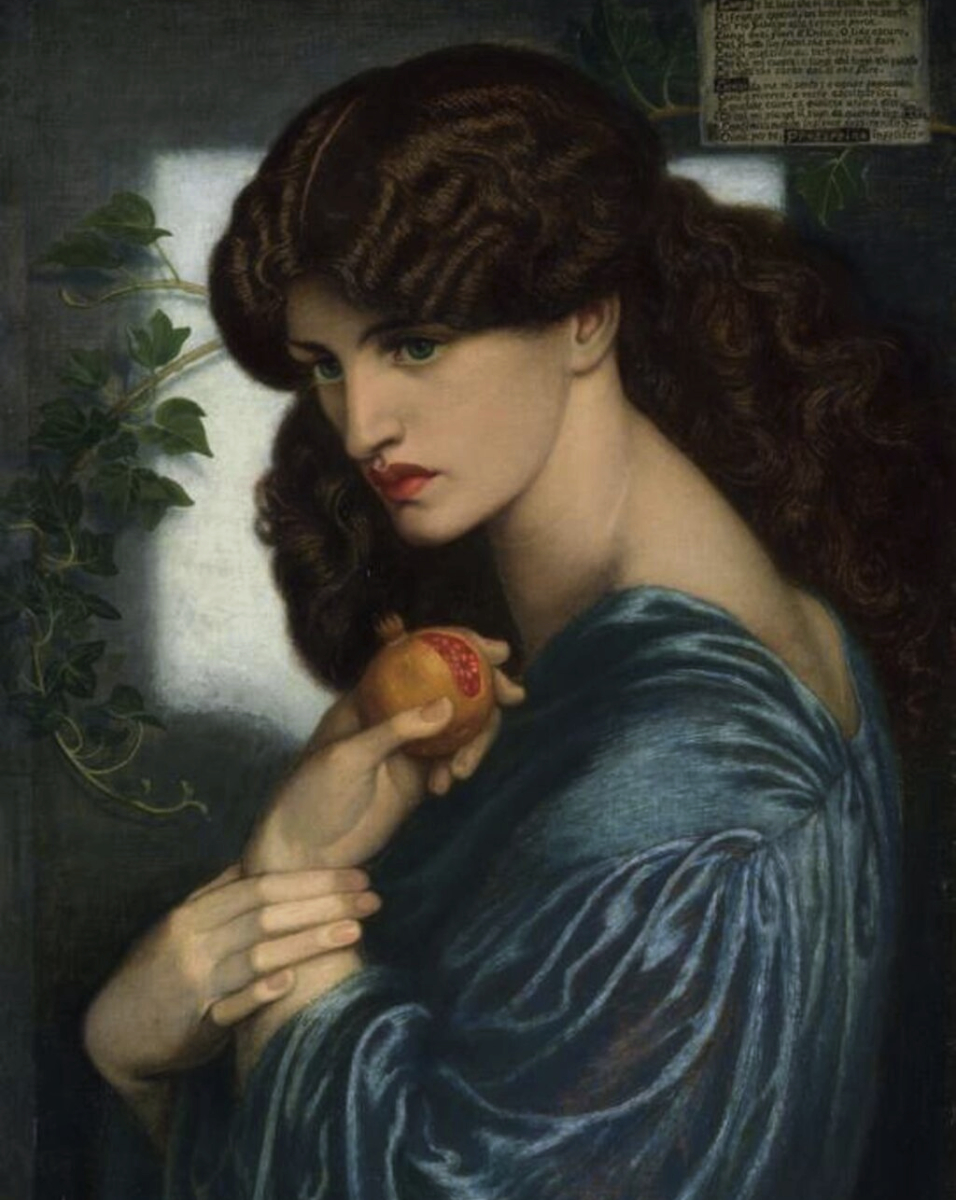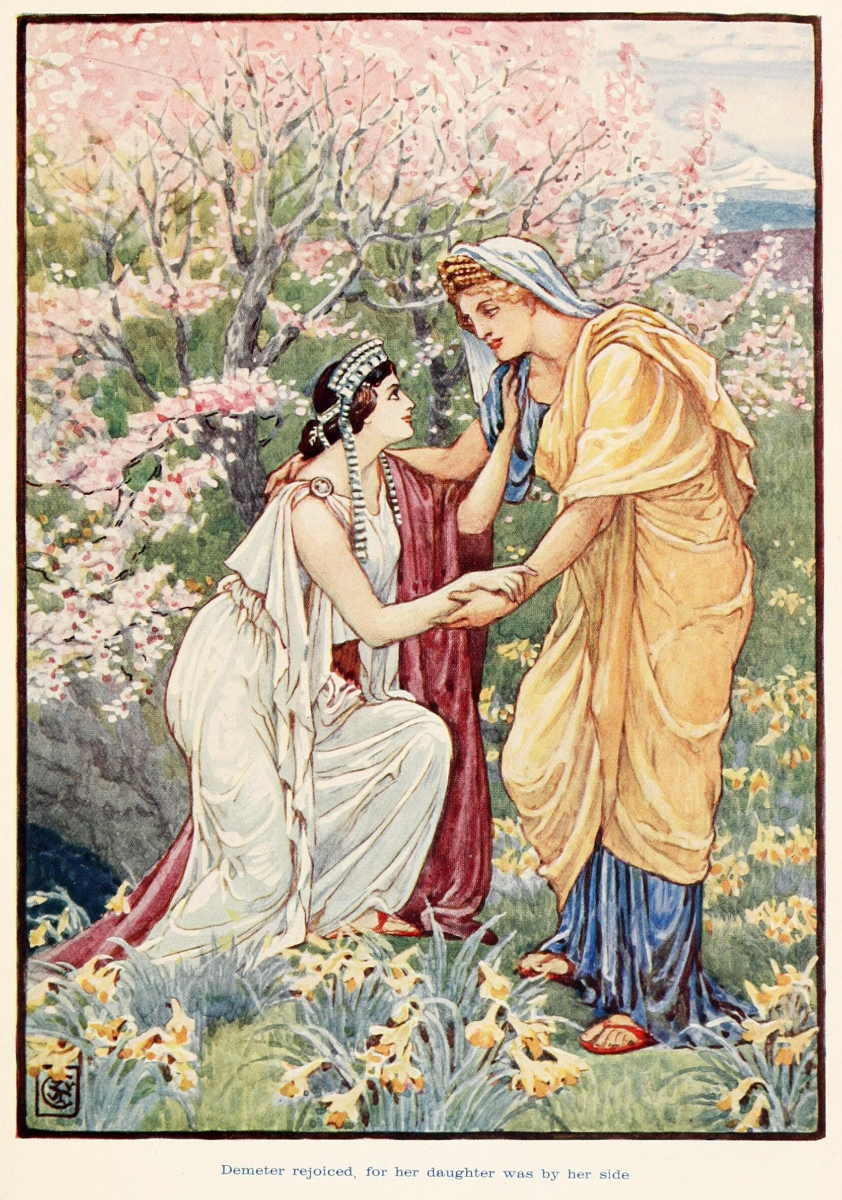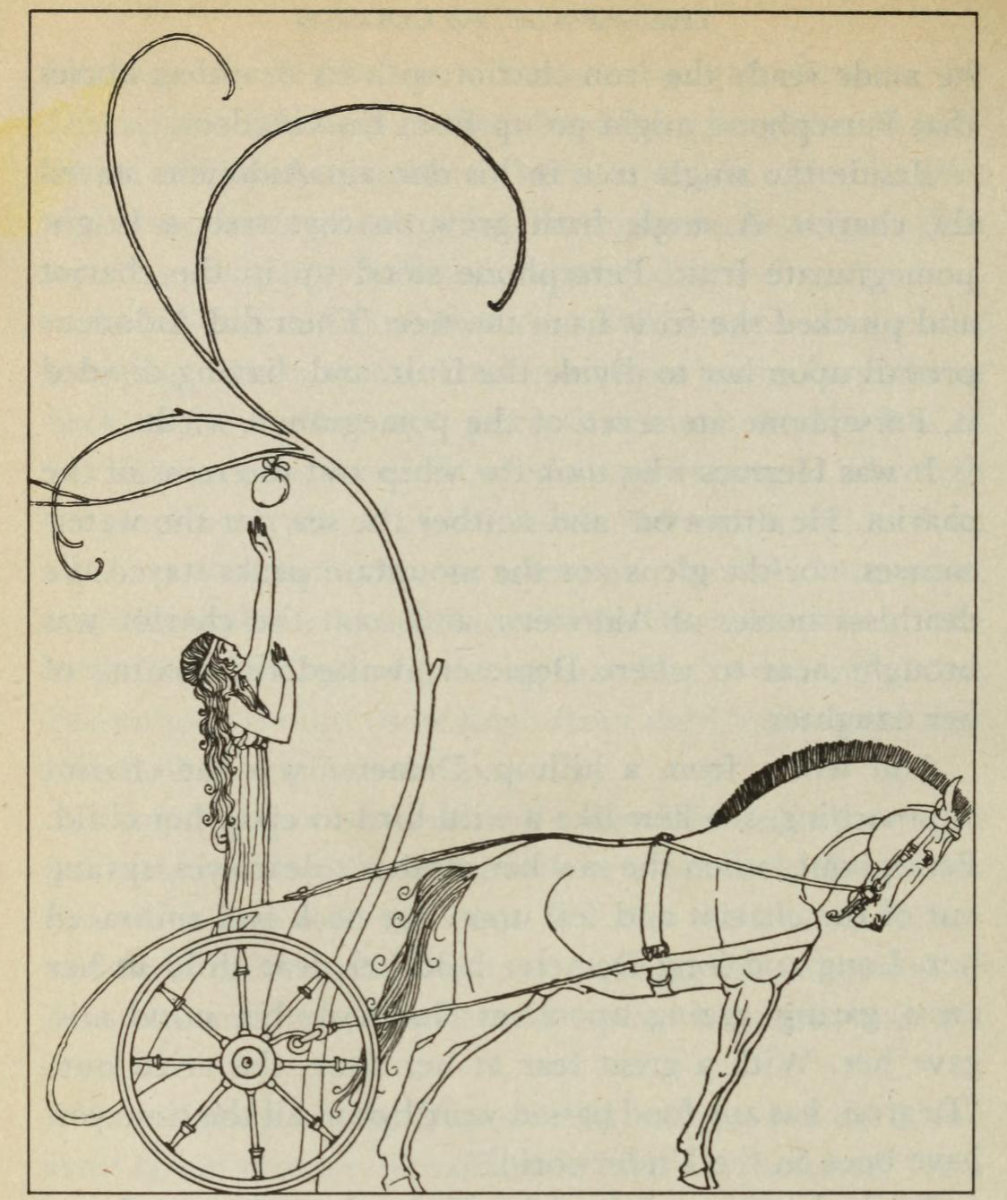In ancient Greek mythology and religion, Persephone, also called Kore or Cora, is the daughter of Zeus and Demeter. She became the queen of the underworld after her abduction by her uncle Hades, the king of the underworld, who would later take her into marriage. The myth of her abduction, her sojourn in the underworld, and her cyclical return to the surface represents her functions as the embodiment of spring and the personification of vegetation, especially grain crops, which disappear into the earth when sown, sprout from the earth in spring, and are harvested when fully grown. In mythology and literature she is often called dread(ed) Persephone, and queen of the underworld, within which tradition it was forbidden to speak her name. In Homer’s epics, she appears always together with Hades in the underworld, apparently sharing with Hades control over the dead. In Homer’s Odyssey, Odysseus encounters the “dread Persephone” in Tartarus when he visits his dead mother. Odysseus sacrifices a ram to the chthonic goddess Persephone and the ghosts of the dead, who drink the blood of the sacrificed animal. In the reformulation of Greek mythology expressed in the Orphic Hymns, Dionysus and Melinoë are separately called children of Zeus and Persephone. Groves sacred to her stood at the western extremity of the earth on the frontiers of the lower world, which itself was called “house of Persephone”.
| Alias Persephone |
| Real Names/Alt Names Persephone (Greek), Proserpina, Proserpine (Roman) |
| Characteristics Myths & Legends, Deity, Prehuman Epoch, Greek |
| Creators/Key Contributors |
| First Appearance Greek mythology |
| First Publisher ○ |
| Appearance List Literature: Homer’s Odyssey (c. 8th century BCE, English 1614), Homer’s Iliad (c. 8th century BC), Hesiod’s Theogony (c. 730–700 BCE), Homeric Hymn to Demeter (7th-6th century BCE), Aeschylus, Apollodorus Bibliotheca, Orphic “Rhapsodic Theogony” (1st century BC/AD), Ovide Metamorphosis, Plutarch, Cicero, et. al. |
| Sample Read The Odyssey (Translated by W. C. Bryant, August, 1871) [Standard eBooks] |
| Description In ancient Greek mythology and religion, Persephone, also called Kore or Cora, is the daughter of Zeus and Demeter. She became the queen of the underworld after her abduction by her uncle Hades, the king of the underworld, who would later take her into marriage. The myth of her abduction, her sojourn in the underworld, and her cyclical return to the surface represents her functions as the embodiment of spring and the personification of vegetation, especially grain crops, which disappear into the earth when sown, sprout from the earth in spring, and are harvested when fully grown. In mythology and literature she is often called dread(ed) Persephone, and queen of the underworld, within which tradition it was forbidden to speak her name. In Homer’s epics, she appears always together with Hades in the underworld, apparently sharing with Hades control over the dead. In Homer’s Odyssey, Odysseus encounters the “dread Persephone” in Tartarus when he visits his dead mother. Odysseus sacrifices a ram to the chthonic goddess Persephone and the ghosts of the dead, who drink the blood of the sacrificed animal. In the reformulation of Greek mythology expressed in the Orphic Hymns, Dionysus and Melinoë are separately called children of Zeus and Persephone. Groves sacred to her stood at the western extremity of the earth on the frontiers of the lower world, which itself was called “house of Persephone”. |
| Source Persephone – Wikipedia |



